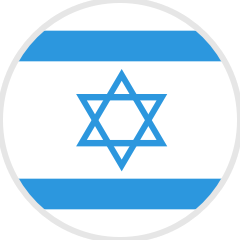How Long Does Making Flashcards Take?
Note 10/20/2022: This is an older blog post containing information about using the Anki software to create flashcards for language learning.
Fluent Forever now offers a proprietary app that automates flashcard creation, letting you concentrate on your learning progress. Check out the 13 languages available in the app, and download it now to start your journey to fluency.
Today, I got a chance to try and answer the question, How long does making new cards in Anki take?
I’ve tested this out in English before, timing how long it took me to find pictures and add them to Anki for a bunch of color words (cardinal, violet, indigo, etc.) That came out to 12 seconds per word, and 6 seconds per card (one card with a picture on the front, the word on the back, and the other card reversed).
You’ll get periods like this in the beginning, when you’re filling in the base vocabulary, that’s particularly easy to do in Google images.
Today, I got to time how long it takes when the words are more complex. I had run out of new Russian cards earlier this week (around 2,200 cards learned in a little more than 3 months), and so it was time to make some new ones. I had already skimmed through my Frequency List and marked the cards I still needed, and put extra marks next to the ones that were relatively easy to portray.
Sitting down at 2:30 and taking a few small breaks for email and Reddit, and a bit of browsing some of the Russian articles that showed up for some of these words, I got 110 cards done in 1.5 hours.
It’s about 40 words from the frequency list, since I learned a fair number of verbs, which I split up into conjugations and perfective/perfective aspect (7 cards for some of the more irregular verbs!).
If I kept going for a while longer (say, another hour), I’d have enough to keep me going for a solid week.
So, in real-world conditions, working with a frequency list, one can expect to need 2–3 hours a week for card creation to maintain a 25 new cards/day habit (although the first thousand cards are substantially easier, and you can make them in probably half the time!)
It’s interesting comparing my Russian experience to my French. I didn’t use a frequency list for French, and I just picked whatever words seemed sort of relevant and easy to image and stuck them in my deck, so adding cards went a lot faster.
But for Russian, I’m only a bit past 3 months in (at ~30 minutes a day of Anki reviews), and I’m beginning to understand quite a bit from a monolingual Russian dictionary. The words take longer to input, but they seem to have a disproportionately large effect on my comprehension, which is what is supposed to happen.
How to make your flashcards faster
If you want to save yourself several minutes or hours of time making your Anki flashcards, then check out our Fluent Forever shop, which has a number of tools you can use to speed up flashcard creation. Other places also have ready-made Anki flashcards in different foreign languages that you can check out.
Don’t forget that we now also have our Fluent Forever app, which doesn’t use Anki but can be way faster.
Check out our guide to the fastest way to learn a language for our 11 ultimate tips to get you to fluency.
[shareaholic app="share_buttons" id="28313910"]
















